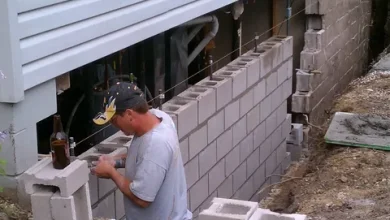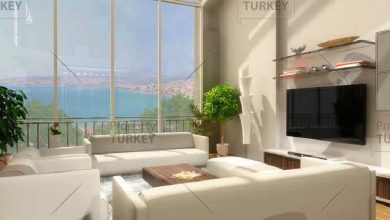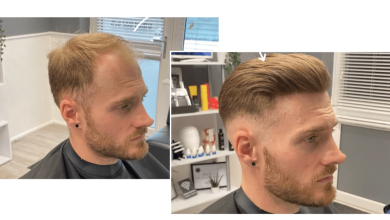The Ultimate Guide to Choosing the Right Home Siding for Your Property

Selecting the right siding for your home is a crucial decision that can significantly impact your property. Not only does the siding enhance the visual appeal of your home, but it also plays a vital role in providing insulation and protection against external elements such as weather conditions. Given the plethora of options available in the market, navigating through the choices to make an informed decision may seem overwhelming. In this comprehensive guide by Siding Installation & Repair in Kitchener, Waterloo & Guelph, we aim to provide you with detailed insights into various siding materials, elaborate on the installation process, and offer valuable tips to help you choose an option that not only meets your home’s specific needs but also resonates with your personal style preferences. By the end of this guide, you will be equipped with the knowledge required to make a well-informed decision regarding your home’s siding.
Exploring Siding Materials
Home siding comes in a variety of materials, each with its unique set of advantages and considerations. Here’s an overview of the most common types.
Vinyl Siding
Vinyl siding is highly favored by homeowners for its affordability, versatility, and low maintenance needs. It’s a top choice for those on a budget or leading busy lives. Discover the benefits with Siding Installation & Repair in Kitchener, Waterloo & Guelph.
Pros of Vinyl Siding:
- Economical
- Wide range of colors and textures available
- Resistant to rot, moisture, and insect damage
- Low maintenance
Cons of Vinyl Siding:
- Prone to crack in extreme temperatures
- Can be less durable than some alternatives
- Limited heat resistance
Wood Siding
Wood siding is revered for its natural beauty and the warm, aesthetic charm it brings to any home. However, maintenance and its vulnerability to pests and rot must be carefully considered.
Pros of Wood Siding:
- Aesthetic appeal
- Excellent insulation properties
- Can be repaired and maintained relatively easily
Cons of Wood Siding:
- High maintenance — requires staining or painting every few years
- Susceptible to rot, insects, and weathering
- Generally more expensive than vinyl
Fiber Cement Siding
Fiber cement is a composite material made from cement, sand, and cellulose fibers. It has gained popularity for its high durability and low maintenance compared to wood.
Pros of Fiber Cement Siding:
- Durable and long-lasting
- Fire-resistant
- Available in a range of textures, including wood grain
Cons of Fiber Cement Siding:
- Heavy and can be difficult to install
- Requires specific cutting tools
- Initially pricier than vinyl
Metal Siding
For modern aesthetics and strong protection, metal siding is a robust and increasingly popular choice. Aluminum and steel siding are the most commonly used metals for residential siding.
Pros of Metal Siding:
- Extremely durable and low-maintenance
- Excellent in extreme weather conditions
- Available with finishes that mimic other materials for a more traditional look
Cons of Metal Siding:
- Prone to denting
- Can be noisy in the rain or wind
- Susceptible to rust without proper maintenance
These options are just the beginning. More specialized materials, such as stucco, brick, stone veneer, and their variants, offer further aesthetic and performance considerations. The unique attributes of these materials can cater to different climates and architectural styles, offering homeowners a broad canvas to work with.
Factors to Consider When Choosing Siding
The type of siding you choose should not only match your architectural vision but also cater to a range of practical considerations. Here are essential factors to keep in mind when making your selection.
Climate Considerations
Your local climate plays a significant role in determining the best siding material for your home. For instance, areas with high humidity may require materials that resist rot and mold. In cold climates, siding must provide excellent insulation to prevent heat loss. Local weather patterns and building codes should influence your decision.
Maintenance and Longevity
Consider the maintenance demands and longevity of the siding materials you’re assessing. While wood siding requires significant upkeep, it can last for decades with proper care. On the other hand, some metal or vinyl options may only need periodic cleaning to maintain their appearance.
Cost and Affordability
The initial cost of the material and installation is a crucial factor to account for. However, the lifetime cost, which includes maintenance and potential repairs, is equally important. Make sure to weigh the upfront costs against the material’s longevity and durability.
Aesthetic Preferences
Your home’s exterior should reflect your personal style while also considering the neighborhood’s character. The color, texture, and style of the siding can contribute to your home’s curb appeal and resale value. It’s wise to seek a balance between trends and timeless design when choosing siding that will be with you for years.
Environmental Impact
Sustainability is a growing consideration for many homeowners. Some siding materials, such as wood from responsibly managed forests, are more eco-friendly than others. Additionally, the energy efficiency of the material and its potential for recycling at the end of its life cycle can further contribute to reducing your home’s environmental footprint.
The Installation Process
The installation process for each type of siding can vary significantly. It’s important to note that while some materials, like vinyl, may be suitable for DIY projects if you have the expertise, others, such as fiber cement or metal, are best left to professional installers.
Vinyl Siding Installation
Installing vinyl siding generally involves these steps:
- Prepare the walls: The existing walls must be cleaned and any damage repaired.
- Install underlayment: A moisture barrier is added to the walls to prevent water damage.
- Add starter strips: These guide the first row of siding.
- Put up the siding panels: Each panel is locked into the previous one and secured with nails.
- Finish with a trim: Soffits, fascia, and other trim components complete the installation.
Fiber Cement Siding Installation
Fiber cement siding requires a meticulous process due to its weight and cutting requirements:
- Cut the siding: Special tools are used to cut the fiber cement material.
- Prepare the walls: The walls need a moisture barrier similar to vinyl siding.
- Install the boards: Techniques for installing the boards differ based on the specific profile and manufacturer’s instructions.
- Address joints and edges: These areas are especially vulnerable to water infiltration and must be carefully sealed.
Wood and Metal Siding Installation
Both wood and metal sidings require precision and protective finishes:
- Prepare the walls: Just like with other materials, the walls must be cleaned and inspected.
- Install underlayment or battens: This step varies based on the specific material.
- Attach the siding panels: Wood and metal panels are typically nailed to the walls.
- Finish with trim: Similar to vinyl siding, trim components complete the project.
Regardless of the material you choose, professional installation can ensure the best possible outcome in terms of functionality and longevity.
FAQs about Home Siding
It’s common for homeowners to have pressing questions and concerns when it comes to choosing home siding. Here are some of the most frequently asked questions to demystify the process.
How Long Does Siding Last?
The lifespan of siding can vary greatly. Vinyl siding can last 30-40 years, while fiber cement and wood siding have lifespans exceeding 50 years with proper care and maintenance.
Can I Change My Siding Color?
While it is technically possible to paint many siding materials, such as wood or certain types of metal, the longevity of this approach may vary. Some materials, like vinyl, offer pre-colored options or may be better suited to new panels for a more lasting change.
What About Home Value and Siding?
Quality siding can significantly impact a home’s value and its curb appeal. Durable, attractive materials like fiber cement or high-grade vinyl can increase your property’s marketability.
Is My Siding Energy Efficient?
The energy efficiency of siding can reduce your heating and cooling costs. Insulated siding, which includes an extra layer of foam, can provide a significant improvement in your home’s energy performance.
Conclusion: A Resilient and Beautiful Home
Choosing the right siding material is a critical decision that melds aesthetics with performance. It’s a composite of understanding the material options, assessing your home’s needs, considering the climate, and, most importantly, reflecting your personal style.
By committing to thoughtful research and perhaps consulting a professional Siding Installation & Repair in Kitchener, Waterloo & Guelph, you can ensure that your home’s exterior not only weathers storms and the passing of time but also stands out as a beacon of your thoughtful investment and care.




